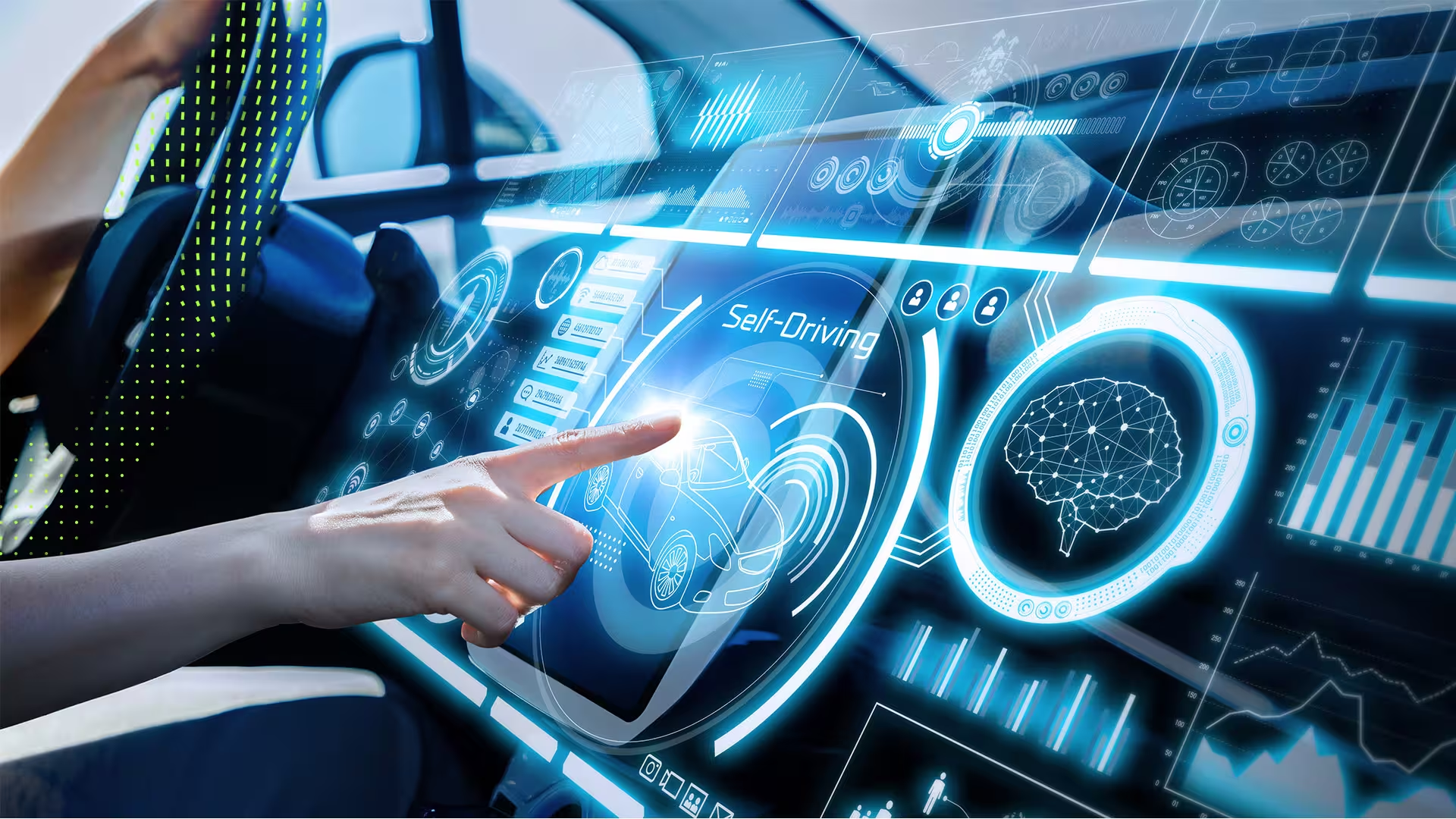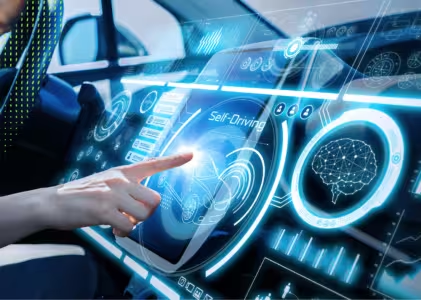AI in Autonomous Vehicles is like getting into a car, giving it your destination, and then sitting back to watch as it makes its way through busy streets, twists, and turns with you lifting not a finger. Sounds like the stuff of science fiction, right?
But with each passing day, autonomous cars are something of the present. Giants like Tesla, Google’s Waymo, and others introduce AI-powered vehicles right to our doorstep.
What’s the Secret Behind Self-Driving Cars?
The “Brains” of the Operation
At the core of every autonomous vehicle is a system that’s constantly “thinking.” It’s a brain, powered by Artificial Intelligence, with the help of data from sensors, cameras, and radars, gets a 360-degree view of the world.
Much as a human driver would process information through sight and sound, AI will analyze its surroundings and decide on what to do next, in split seconds. Think of it as the ultimate driving assistant, which can react to everything from a car suddenly braking in front of yours to a pedestrian stepping onto the road.
Real-World Example:
Take Tesla’s Autopilot. With this feature on, it steers into lanes, adjusts speed based on the flow of traffic, and even assumes control when going through heavy traffic. All these would be functions of algorithms learning traffic patterns, behaviours, and signals.
Understanding Sensors and Cameras
Driving safely requires that an AV be more than just “blind”; thus, the an additional need for sensors with AI-powered capabilities.
LiDAR is one such technology that shoots out rapid pulses of laser light and measures how long it takes for those pulses to return after bouncing off an object. This helps create a detailed 3D map of the surroundings.
Cameras Add Depth to Decision-Making
Cameras capture visual information to help the AI understand the world and recognize lane lines, stop signs, and traffic lights. Think of these as the “eyes” of the car-complementing radar sensors, which detect speed and position changes of objects, working like the “ears,” listening for constant changes.
Quick Analogy:
One can consider the car the orchestra conductor. Sensors and cameras are the instruments feeding it information. The AI takes all of these “sounds” and “sights” and coordinates them into a smooth, safe journey.
Decision-Making in a Flash
What Makes AI Decide When to Stop or Go?
AI is what empowers an AV to “decide” which action is proper to take on. The moment the AI encounters something out of the blue, like a cyclist swerving into its lane suddenly, it runs through countless possible scenarios-choosing the safest, quickest response.
This sort of decision-making, known as “deep learning,” relies upon algorithms that are trained on thousands of hours of driving data. The more the AI “practices,” the better it gets at guessing behaviours and acting accordingly.
Real-Time Processing: The Critical Role
In a self-driving car, the AI does not only need to analyze data and make decisions but also in real-time. Much as a driver would react on a traffic red light, the AI should process information instantly to coordinate the steering, braking, and acceleration of the car in order to avoid potential accidents.
Pros and Cons of Self-Driving Cars
The Potential Benefits
- Reduced accidents: AVs would make fewer errors, thus reducing traffic accidents that are normally caused by driver distraction, fatigue, or driving under the influence.
- Increased Mobility: The technology would offer free movement to those who cannot drive, such as the elderly and people with disabilities.
- Environmental Impact: The AVs would reduce emissions by optimizing routes and reducing idling time, especially when combined with electric engines.
Key Challenges and Risks on AI in Autonomous Vehicles
- Safety: Although AVs are engineered to be safe, weird occurrences can never be fully ruled out. For instance, self-driving technology has occasionally misinterpreted more subtle hints from people, say when a pedestrian waves for the car to continue.
- Job Impact: For example, what happens to the millions of truck drivers out there when driverless trucks become the norm? This may imply that society needs to rethink some of these traditional jobs and develop new paths where people can be employed in this transition.
What’s Next for AI in Autonomous Vehicles?
The journey to fully autonomous cars is underway. Today’s self-driving cars are considered “Level 2” or “Level 3” autonomy-able to assist with certain tasks but still require a human backup. The utopian goal would be “Level 5” autonomy: involving vehicles that drive themselves with no human input at all, in any environment.
Curious about the Future?
We can still be a few years off from truly “driverless” technology, but the rapid development of AI makes it more plausible with each passing day. In the near term, self-driving cars could operate in specific zones or along specific routes, such as public shuttles on college campuses or package delivery vehicles in urban areas.
More From Us
Role of AI in Fleet Management
How the Transport Industry is changing due to AI
Frequently Asked Questions: Smart Questions about Driverless Cars
Q: Will driverless cars be safe?
A: They have proved to be much safer than human drivers in many cases. However, unpredictable on-road situations may still bug the AI. Companies are trying to make the AI adaptable to such situations.
Q: Will Self-driving cars work in all weather conditions?
A: Severe weather conditions might still affect the sensors. In such cases, heavy fog, rain, or snow impede the visibility of a vehicle to “see” the road; therefore, it is still in evolution in order to make AV technology more reliable for such bad weather conditions.
Q: Can AI make ethical decisions on the road?
A: That is quite an interesting field. AI has no ethics; hence, it does pose a tough question in the face of decisions that are to be made when harm becomes inevitable. How to embed ethical decision-making into autonomous systems is being debated among researchers and engineers.
What’s Ahead? | AI in Autonomous Vehicles
AI-powered self-driving cars can revolutionize the aspect of transportation. From improving road safety to making journeys possible for everyone, it’s an exciting future ahead.
If you are keen on understanding more, have a read of related information about AI, transportation, and ethics. Whether or not it will be sooner that we all have self-driving cars, it certainly looks like AI is steering us toward a new age in mobility. The next time you’re in the driver’s seat, you might just be riding along with AI.


